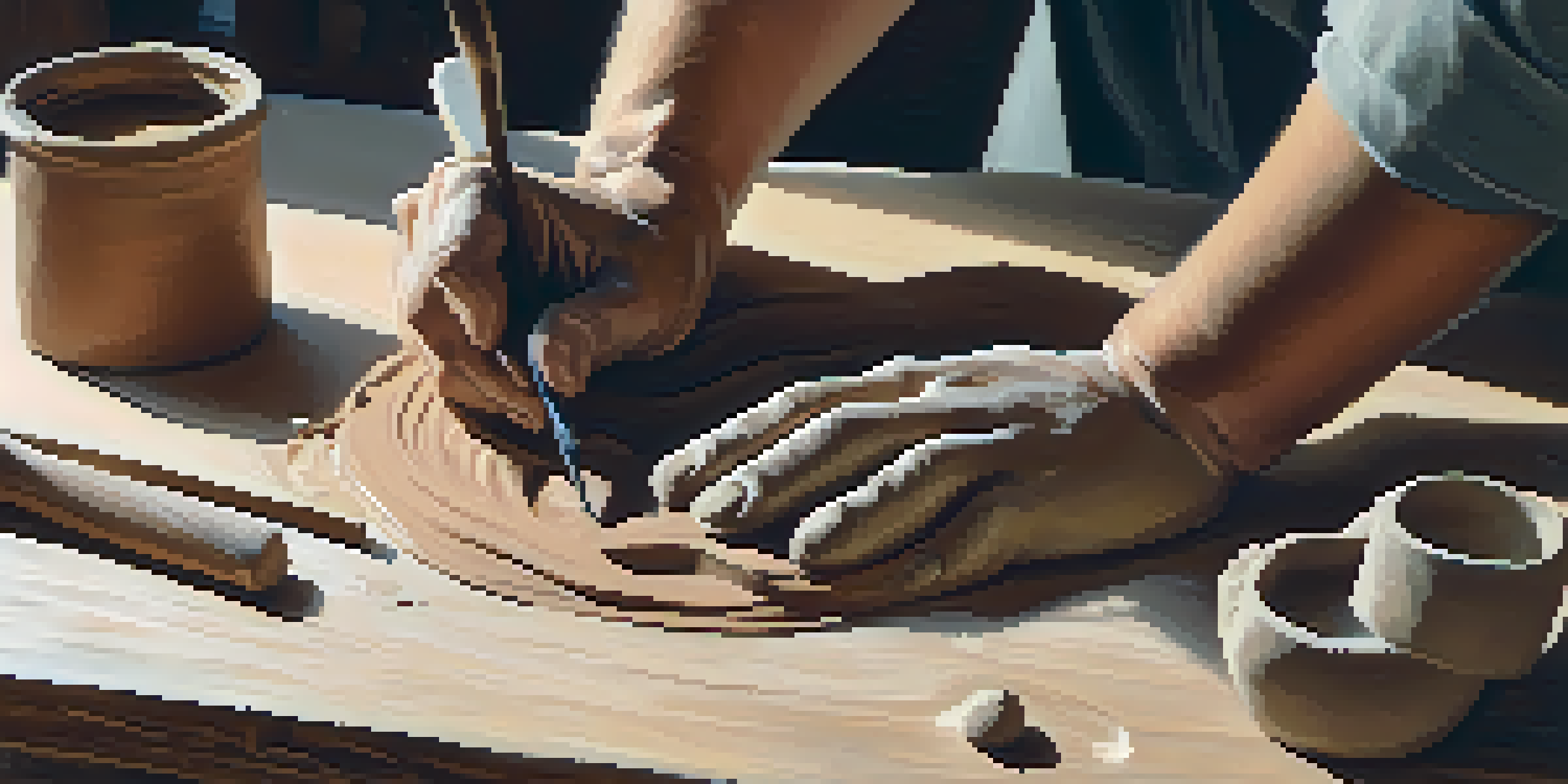Different Materials Used in Sculpting: A Comprehensive Overview

Introduction to Sculpting Materials: An Overview
Sculpting is a fascinating art form that has evolved over centuries, using various materials to create expressive works. Artists choose their materials based on the desired effect, durability, and ease of manipulation. Understanding these materials is crucial for both aspiring sculptors and art enthusiasts alike. In this article, we will explore the different materials used in sculpting and their unique characteristics.
Clay: The Timeless and Versatile Sculpting Medium
Clay has been a favorite among sculptors for thousands of years, thanks to its accessibility and flexibility. From traditional earthenware to modern polymer clays, this material allows for intricate detailing and easy adjustments during the sculpting process. Artists can create both small figurines and large installations with clay, making it suitable for a wide range of projects. Additionally, the firing process can transform clay into durable ceramics, adding to its appeal.
Diverse Sculpting Materials Explained
Different materials, from clay to metal, offer unique characteristics that significantly impact the sculpting process.
Stone: The Classic Choice for Enduring Sculptures
When we think of sculpture, stone often comes to mind. Materials like marble, granite, and limestone have been used since ancient times to create stunning, timeless pieces. Stone offers a sense of permanence and solidity, allowing artists to create intricate details that stand the test of time. However, working with stone requires specialized tools and techniques, making it a challenging yet rewarding option for sculptors.
Wood: The Warm and Organic Material for Sculpting
Wood is another classic material that brings warmth and character to sculptures. Its natural grain and texture create unique visual effects that can't be replicated with synthetic materials. Artists can carve, assemble, or even combine different types of wood to achieve their vision. However, wood is susceptible to changes in humidity and temperature, which can affect its longevity, making preservation techniques essential for wooden sculptures.
Clay: Versatile and Accessible Choice
Clay remains a popular medium due to its flexibility and ease of use for both small and large projects.
Metal: The Strength and Modernity of Sculpting
Metal sculptures have gained popularity due to their strength and modern aesthetics. Materials like bronze, steel, and aluminum allow for both intricate designs and large-scale installations. The process of casting or welding metal can be complex, but the results are often striking and durable. Additionally, metal sculptures can be finished with various patinas or paints, giving artists the flexibility to achieve their desired look.
Plaster: The Quick-Drying and Malleable Option
Plaster is a favorite among sculptors for its quick-drying properties and ease of use. It can be molded into various shapes and is often used for creating prototypes or models before moving on to more permanent materials. While plaster may not have the durability of stone or metal, it allows for detailed work and experimentation. Artists can also use plaster for casting or creating relief sculptures, making it a versatile choice.
Choosing the Right Material Matters
Selecting the appropriate sculpting material is essential, as it can shape the final outcome of an artist's work.
Resin: The Contemporary and Innovative Medium
Resin has emerged as a popular choice for modern sculptors, offering a lightweight and durable option. This synthetic material can be easily colored and cast into intricate shapes, providing endless creative possibilities. Artists appreciate resin for its ability to replicate details and textures, making it ideal for both fine art and functional pieces. However, working with resin requires careful handling due to its chemical properties, which is an important consideration for artists.
Conclusion: The Right Material for Your Sculpting Journey
Choosing the right material for sculpting can significantly influence the final outcome of your artwork. Each medium offers unique advantages and challenges, and understanding these can help artists make informed decisions. Whether you gravitate towards the timelessness of stone, the warmth of wood, or the innovation of resin, the key is to explore and experiment. Ultimately, the right material is one that resonates with your artistic vision and process.